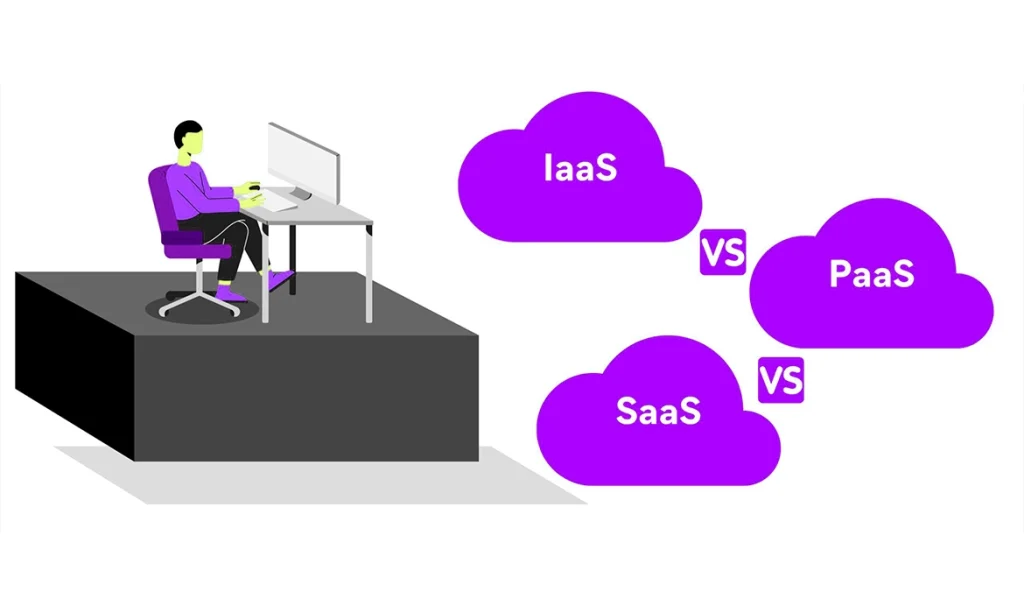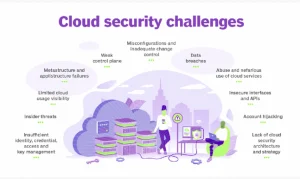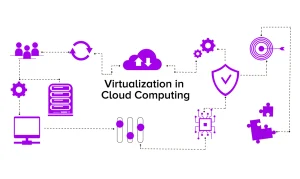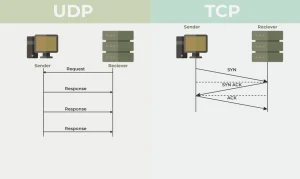IaaS, PaaS, and SaaS have surged in popularity, offering businesses of all sizes cost-effective, scalable, and flexible cloud computing solutions. This blog delves into the crucial distinctions between Infrastructure as a Service (IaaS), Platform as a Service (PaaS), and Software as a Service (SaaS).
Exploring their key characteristics, advantages, drawbacks, and differences, we aim to equip you with the insights needed to make informed decisions for your business.
Table of Contents
Understanding IaaS, PaaS, and SaaS
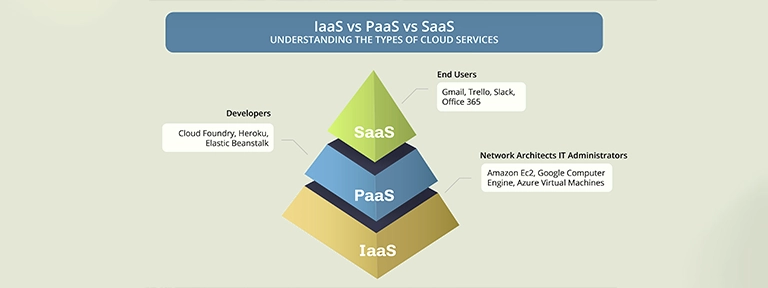
Let’s grasp the fundamentals.
What is IaaS?
IaaS (Infrastructure as a Service) is a cloud computing service model providing virtualized computing resources via the internet. Here, a third-party provider hosts hardware, software, servers, storage, and other infrastructure components for users. IaaS offers high scalability, enabling businesses to procure resources on-demand—ideal for temporary, experimental, or evolving workloads.
What is PaaS?
PaaS (Platform as a Service) is a cloud computing service model offering developers a platform to build, test, and deploy applications without concerning themselves with the underlying infrastructure. PaaS incorporates tools, libraries, and services, streamlining application creation and management. Businesses can concentrate on application development while the PaaS provider handles infrastructure management.
What is SaaS?
SaaS (Software as a Service) is a cloud computing service model delivering software applications over the Internet. Users can access applications via a web browser, eliminating the need for individual device installations. SaaS providers oversee the underlying infrastructure, ensuring applications are consistently updated and available.
IaaS vs PaaS vs SaaS: Key Traits
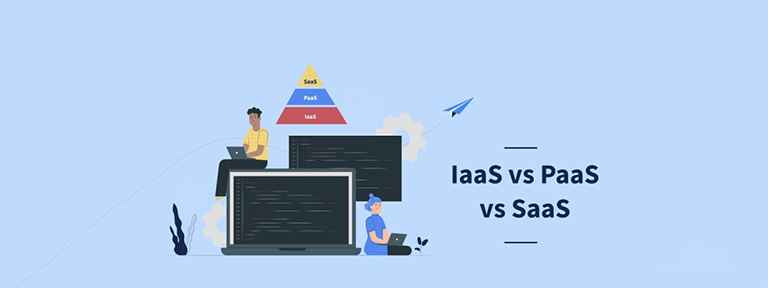
Having covered the basics, let’s delve into the distinctive characteristics of each.
IaaS Characteristics
Essential features of IaaS include:
- Scalability: IaaS offers resources on-demand, allowing businesses to adjust scale based on requirements.
- Cost-effectiveness: Users pay only for consumed resources, reducing upfront costs.
- Customization: IaaS provides high control, enabling tailoring of the environment to specific business needs.
- Security: IaaS companies usually provide strong security features including encryption, intrusion detection systems, and firewalls.
PaaS Characteristics
Key features of PaaS encompass:
- Developer Tools: PaaS includes tools for streamlined application development and deployment.
- Middleware: PaaS provides services like database management, messaging, and caching to support application development.
- Scalability: PaaS platforms automatically scale resources to accommodate changing workloads.
- Collaboration: PaaS facilitates easier collaboration among developers, offering access to the same tools and resources from anywhere.
SaaS Characteristics
Key traits of SaaS comprise:
- Accessibility: SaaS applications are accessible from any device with an internet connection, ideal for remote work.
- Automatic Updates: SaaS providers manage software updates, ensuring users have access to the latest features and security patches.
- Subscription-based Pricing: SaaS typically employs a subscription model, allowing businesses to pay for the features they need.
- Integration: SaaS applications often integrate with other cloud services, streamlining workflows and enhancing data sharing.
IaaS vs PaaS vs SaaS: Advantages and Disadvantages
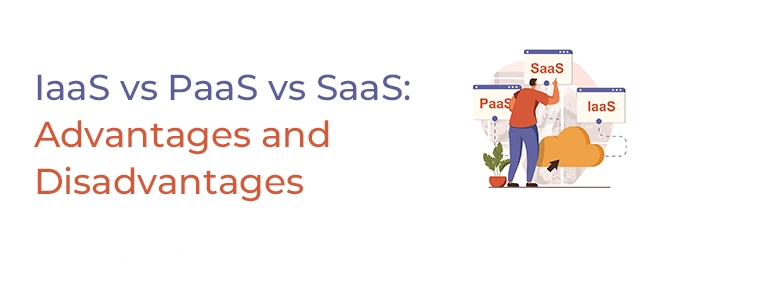
To gain a better understanding of these cloud computing service models, it’s crucial to take note of their pros and cons.
- IaaS Pros and Cons
- Pros:
- Flexibility: IaaS provides businesses the flexibility to scale resources based on their needs.
- Cost Savings: Eliminates the need for businesses to invest in and maintain their hardware, reducing capital expenses.
- Control: Offers businesses control over their infrastructure, enabling customization to meet specific needs.
- Cons:
- Management: Requires businesses to manage their infrastructure, which can be time-consuming and complex.
- Security: While IaaS providers offer security measures, businesses are responsible for securing their applications and data.
- PaaS Pros and Cons
- Pros:
- Faster Development: PaaS streamlines application development, enabling quicker building and deployment.
- Reduced Complexity: Abstracts the underlying infrastructure, allowing developers to focus on writing code rather than managing servers.
- Cost Savings: Eliminates the need for businesses to invest in and maintain their development infrastructure.
- Cons:
- Limited Customization: May not offer the same level of customization as IaaS, a drawback for businesses with unique requirements.
- Vendor Lock-In: Businesses may become dependent on a specific PaaS provider, complicating platform switches or application migrations.
- SaaS Pros and Cons
- Pros:
- Ease of Use: SaaS applications are user-friendly, requiring no installation or maintenance, ideal for businesses with limited IT resources.
- Cost Savings: Eliminates the need for businesses to invest in and maintain their software, reducing capital expenses.
- Automatic Updates: Providers handle software updates, ensuring users always access the latest features and security patches.
- Cons:
- Limited Customization: May not offer the same level of customization as IaaS or PaaS, a drawback for businesses with unique requirements.
- Data Security: While providers typically offer robust security, businesses must trust them to protect sensitive data.
IaaS vs PaaS vs SaaS: Notable Contrasts
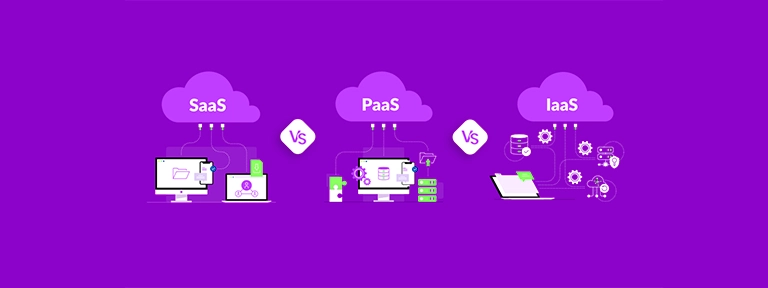
Distinguishing between IaaS, PaaS, and SaaS involves assessing various parameters. We’ll explore 10 key distinctions across these cloud computing service models.
- Service Model:
- IaaS provides virtualized computing resources.
- PaaS offers a development platform.
- Over the Internet, SaaS provides ready-to-use software programs.
- Infrastructure Management:
- IaaS users manage their infrastructure.
- PaaS and SaaS users rely on providers for infrastructure management.
- Application Development:
- IaaS lacks tools for application development.
- For developers, PaaS offers a range of tools and services.
- SaaS focuses on delivering pre-built applications.
- Scalability:
- IaaS offers the most control over resource scaling.
- PaaS and SaaS automatically scale based on demand.
- Customization:
- IaaS allows the highest level of customization.
- PaaS offers some customization options.
- SaaS typically has the least customization capabilities.
- Cost Structure:
- IaaS follows a pay-as-you-go model.
- PaaS usually employs a subscription-based pricing model.
- SaaS utilizes a subscription-based model with plans based on features and user count.
- Security:
- IaaS users are responsible for securing applications and data.
- PaaS and SaaS providers handle most security aspects.
- User Responsibility:
- IaaS users manage infrastructure (servers, storage, networking).
- Users of PaaS concentrate on application development and deployment.
- SaaS users manage data and settings within the application.
- Deployment Speed:
- IaaS deployment is time-consuming, requiring setup and configuration.
- PaaS enables faster deployment with a pre-set development platform.
- SaaS offers the quickest deployment, accessible through a web browser.
- Vendor Lock-in:
- IaaS users can migrate infrastructure easily.
- Platform-specific tools might be a problem for PaaS users.
- SaaS users may experience significant vendor lock-in, complicating data and setting migration between applications.
Wrapping Up:
In conclusion, understanding the distinctions between IaaS, PaaS, and SaaS is pivotal for informed decision-making in cloud computing. IaaS empowers users with scalable infrastructure control, making it ideal for varied workloads. PaaS streamlines application development, reducing complexity but limiting customization. SaaS delivers ready-to-use applications, ensuring accessibility and ease but sacrificing some customization options.
Each model offers unique advantages and considerations, such as deployment speed, user responsibility, and vendor lock-in. The choice ultimately hinges on specific business needs, emphasizing the importance of aligning cloud service selection with organizational goals for optimal efficiency, scalability, and security.


